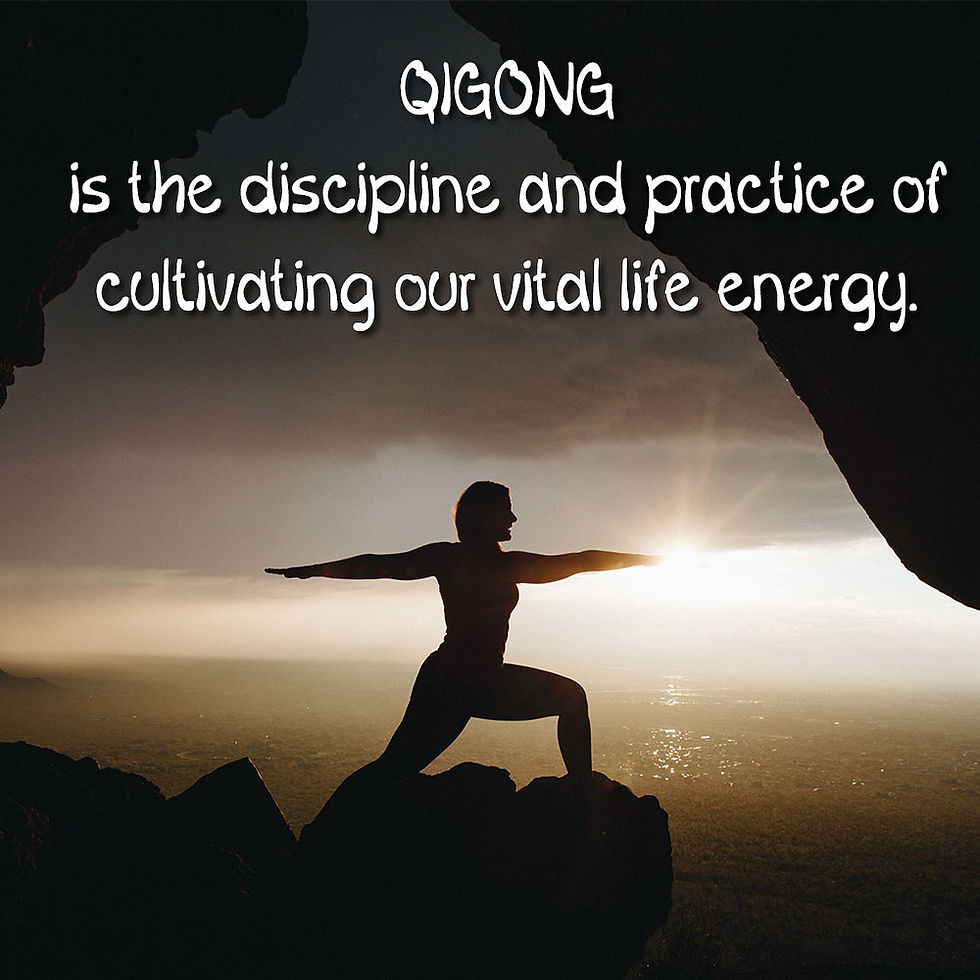Qigong for Healing the Mind and Body
- Dr. Diana Navarro, Ph.D
- 3 days ago
- 2 min read

How Movement, Breath, and Awareness Restore Inner Balance
Qigong is an ancient Chinese healing practice that blends gentle movement, meditation, breathwork, and sound to direct and harmonize energy from within. Pronounced chee-gong, this practice is rooted in two powerful concepts. “Qi” refers to vital life force or living energy, and “gong” represents steady effort, skill, or mastery. Together, Qigong means cultivating life energy through dedicated practice.
Qi is the vital energy that sustains life. It affects health, vitality, longevity, and emotional balance. Gong represents the patience, repetition, and intention required to develop mastery. Through Qigong, individuals can heal the body, calm the mind, and nourish the spirit. It is considered a holistic practice that supports physical, mental, emotional, and spiritual dimensions of wellness.
The Mind Body Connection
Qigong emphasizes the connection between mind and body. By learning to sense and direct internal energy, practitioners deepen their awareness of the physical body and the energetic landscape within. Emotions play a powerful role in this system. According to Qigong teachings, the five main organ systems communicate continuously. They interact like members of a family, supporting one another in physical and energetic expression.
Emotions are not limited to thoughts. They live in the body as energy. When organs experience stress or imbalance, emotions may also become unbalanced. For example, when the liver is strained, a person may feel more anger, frustration, or difficulty thinking clearly. When qi becomes blocked, individuals may experience stress, fatigue, or illness. When qi flows easily, people feel vibrant, clear minded, and motivated. Qigong helps release trapped energy, restoring vitality and promoting inner harmony.
Cultivating qi is essential for long-term health and vitality. How energized, alive, or joyful a person feels is closely connected to the free flow of life force energy.

How Qigong Works
Qigong focuses on unblocking qi and restoring balanced energy flow. Practitioners use controlled breathing, meditative focus, slow postures, guided imagery, and gentle movement to cultivate and direct energy. Qigong is often described as movement meditation rather than exercise. One of the most recognized forms is tai chi, a practice rooted in Qigong principles.
Qigong uses the conscious mind to guide the body into relaxation while maintaining alertness. This combination of deep relaxation and heightened awareness is unique and powerful. Most people only reach this state when asleep, but Qigong intentionally creates this state while awake. Once the body relaxes, the practitioner can direct their energy to optimize functioning throughout the body.
Qigong helps build strength and stamina from the inside out. Although movements are gentle, their energetic effect can feel as impactful as traditional physical exercise. Qigong is widely used for stress relief, improving focus, and restoring inner balance.
There are thousands of Qigong styles practiced worldwide. They generally fall into three categories: Medical Qigong, Martial Qigong, and Spiritual Qigong. Each has its own focus, yet all work with breath, awareness, and energetic flow. Practitioners often combine techniques from each category depending on their goals.
Medical Qigong focuses on healing oneself and others. Martial Qigong enhances physical ability, strength, and stamina. Spiritual Qigong supports insight, inner awakening, and connection to higher awareness. Across all types, Qigong sharpens the mind, relaxes the body, and revitalizes the entire energy system.
Get the full report, workbook and infographics to help your Energy Healing Journey





Comments